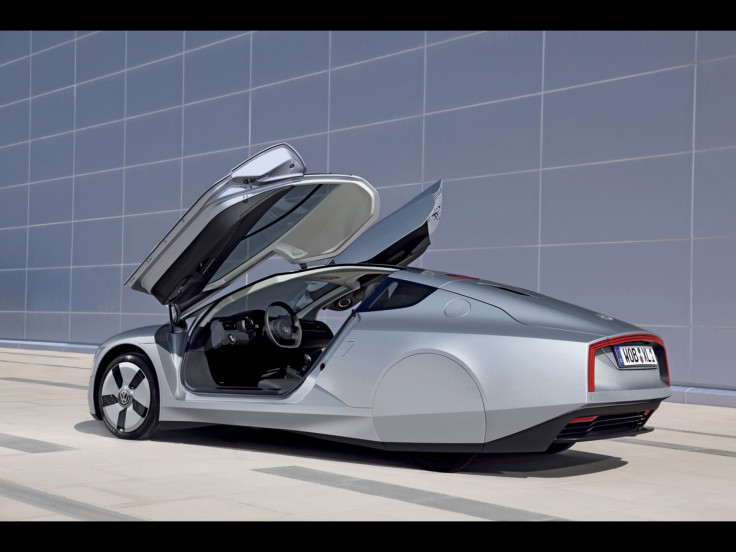Volkswagen XL1: Hybrid Electric Concept Car Averages An Amazing 262 MPG [VIDEO]

To answer a growing demand for efficient vehicles, Volkswagen introduced a new hybrid electric concept car to compete with electric vehicles like the Tesla Model S and hydrogen fuel-cell cars coming from General Motors and Honda. The Volkswagen XL1 averages an amazing 262 mpg, and although it may never hit streets in the United States, the technology behind the car could impact future Volkswagen vehicles.
The keys to the incredible mileage in the Volkswagen XL1 were reducing the weight of the vehicle and eliminating wind resistance. The XL1 only weighs 1,753 pounds -- that's more than a thousand pounds lighter than the Toyota Prius, which weighs in at 2,921 pounds.
The wheels on the Volkswagen XL1 are as thin as road bike’s and wrapped in custom Michelin rubber. The XL1 chassis is a single piece of molded carbon-fiber, and has a drag coefficient of only 0.189 -- similar to a bumblebee.
The Volkswagen XL1 battery can propel the car for 31 miles at 62 mph on its own, and can fully recharge in just an hour and a half. With the two-cylinder, 47-horsepower diesel engine, the Volkswagen XL1 can reach a maximum speed of 94 mph.
However, the Volkswagen XL1 sacrifices many of the safety features and conveniences most consumers expect from modern cars in favor of efficiency. The Volkswagen XL1 doesn’t have a backseat, power steering or power windows in order to reduce weight. There is no radio or a plug for a smartphone, though the Volkswagen XL1 does have Bluetooth.
Most troubling is that the Volkswagen XL1 doesn’t have side mirrors, a rear-view mirror or even a back window. Instead, the Volkswagen XL1 has cameras and requires the driver to monitor video feeds to see around them. Yahoo’s Neal Pollack described driving the XL1 on city streets as “terrifying.”
Volkswagen has only made 50 XL1s and they are primarily used for test drives. A few Europeans won a Volkswagen XL1 from an essay contest on green energy. Volkswagen plans to produce 250 but hasn’t said whether they will sell them or not. It’s unlikely that the light-weight hybrid will ever make it to American streets.
However, the technology behind the Volkswagen XL1 may find its way into future Volkswagen vehicles. Volkswagen already uses the two-cylinder engine in the Up, a budget vehicle in European markets. Some suspect that the innovative airflow intake and carbon-fiber design will make its way to new vehicles, and others have speculated that Volkswagen will use the design for an upcoming sports car.
Oh, and the XL1 features gull-wing doors. So if you dream about a futuristic, hyperefficient DeLorean, the XL1 could be perfect.

© Copyright IBTimes 2024. All rights reserved.












